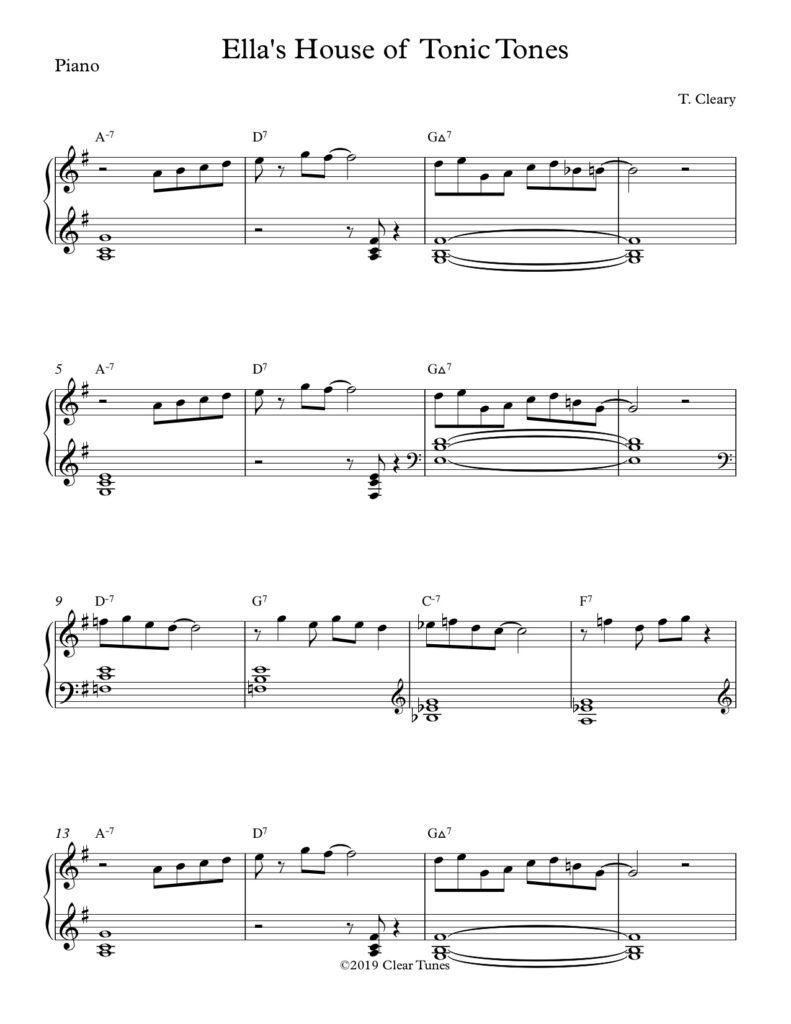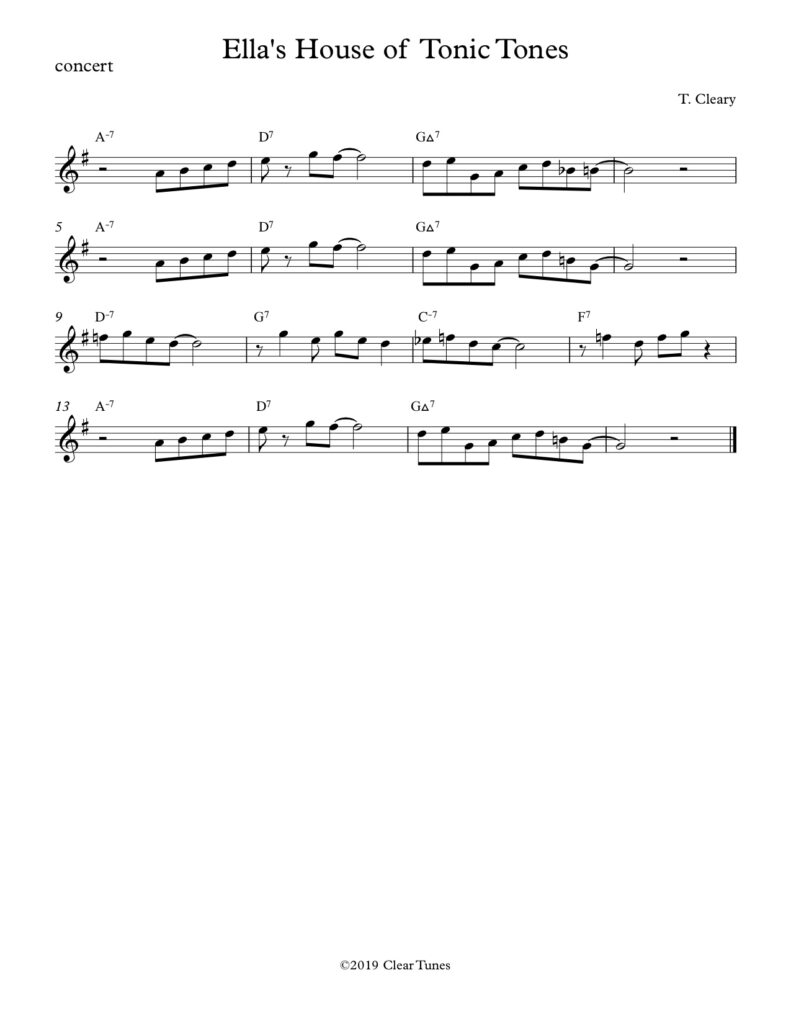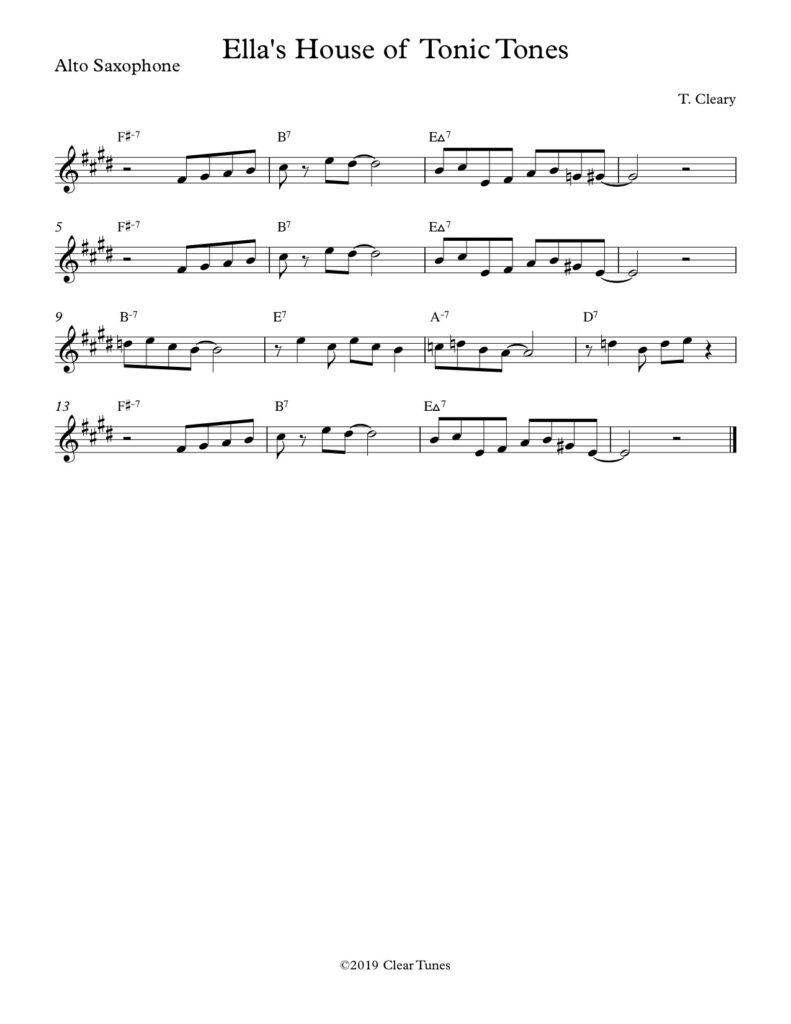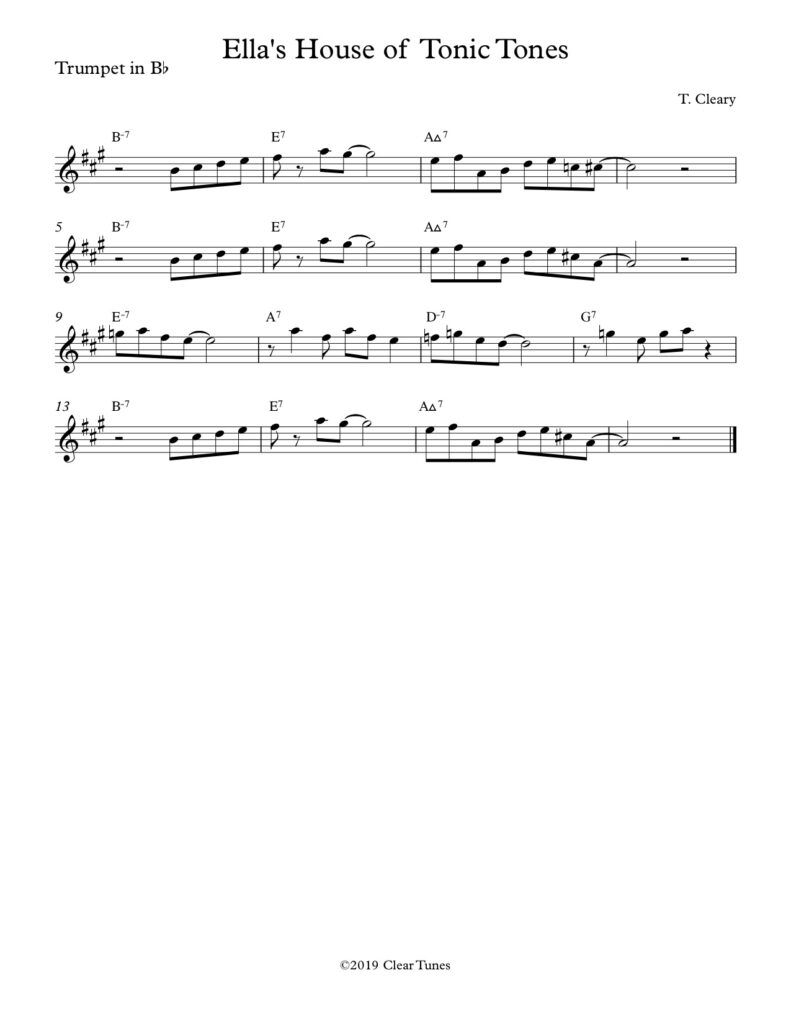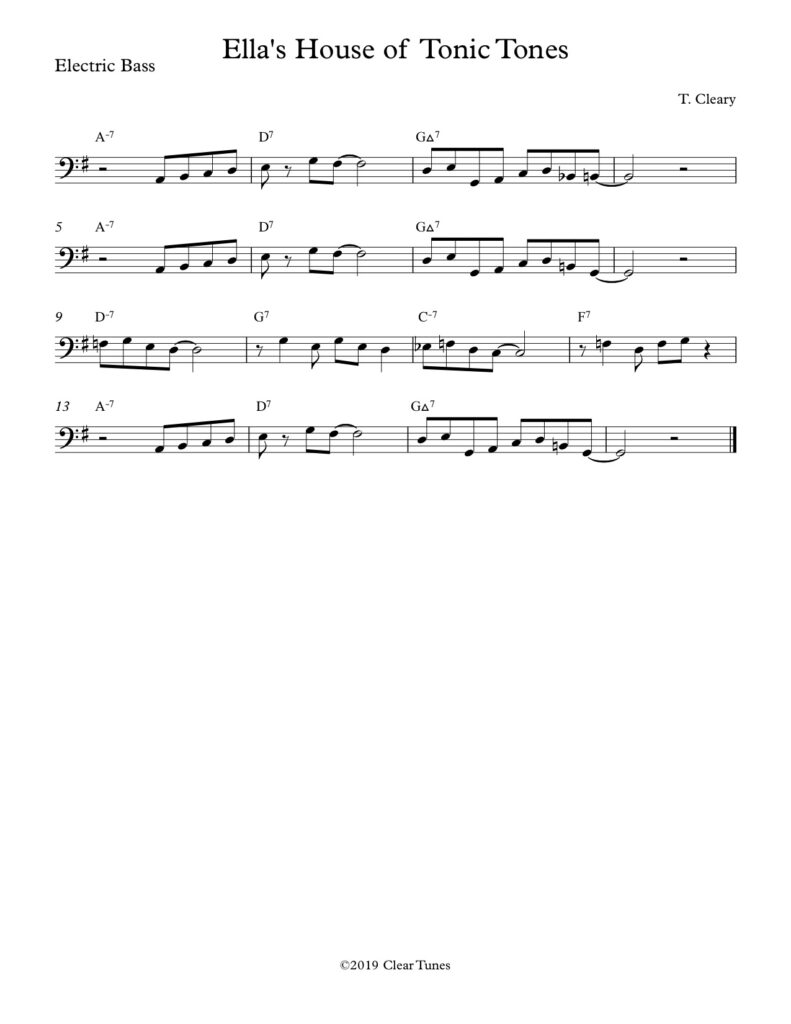I composed the tune below, ‘Ella’s House of Tonic Tones’, while teaching a class called ‘Ella-vated Improvisation’. It’s based on the ‘solo changes’ (the chords used for improvising) to Sonny Rollins’ Pent-Up House. Below you’ll find a keyboard video of me playing the tune, along with sheet music for piano, and Bb, Eb and bass clef instruments. In ‘Ella-vated Improvisation’, we studied a number of Ella Fitzgerald’s scat solos from the album ‘Ella Fitzgerald sings the Duke Ellington Songbook’. On this album, in addition to singing Ellington’s tunes with lyrics, Ella functions like a horn player in the band, singing along with soli sections and improvising, both in extended solos of her own and in trading fours and twos with other soloists. Ella’s solos on ‘Satin Doll’ and ‘In A Mellow Tone’ from this album were the inspiration for the melodic line in this tune. (Thanks to Amber deLaurentis for her transcription of the ‘Satin Doll’ solo and Carly Flatau for her transcription of the ‘Mellow Tone’ solo.) ‘Ella’s House’ could be described as an imaginary Ella melody line on Rollins’ chord progression. In this sense it could also be described as a work of musical ‘fan fiction’ (the term for writing by fans of well-known books, films, etc. that creates new adventures for well-known characters. A portal to various kinds of fan fiction can be found here.) As with any piece of fan fiction, it is crucial to know the original sources that the variation is based on, so it is crucial to listen to the three tunes I linked to above before learning ‘Ella’s House’. Here is a link to a three chorus playalong at a slower tempo that will allow you to play the melody, one chorus of improvised solo and a return to the melody.
I have found Ella’s improvised solos very useful for vocalists and instrumentalists alike. Besides being very ‘playable’ instrumentally, learning to speak or sing an Ella solo with her highly evolved language of scat syllables can often show students more about how to phrase a melodic line with swing feel than traditional ways of notating articulation. (For a more advanced melodic line on these changes, check out ‘Birdhouse’.) ‘House of Tonic’ is also a reference to Charles Ives’ song ‘The Housatonic at Stockbridge‘, the lyrics of which describe a river that, much like Ella’s singing, is in constant motion and yet exudes inner peace. An astute member of my class pointed out that the river in the title is actually pronounced ‘hoosatonic’. In any case, Charles Johnson’s lyrics for me provide a visual analogy for the way Ella’s voice is both captivating and medicinal: ‘what eye but wanders with thee at thy will, contented river?’ I encourage you to check out the transcribed Ella solo excerpts in my post Rhythm Changes and Trading Fours and see if these melodic shapes remind you of the river that Johnson describes.
